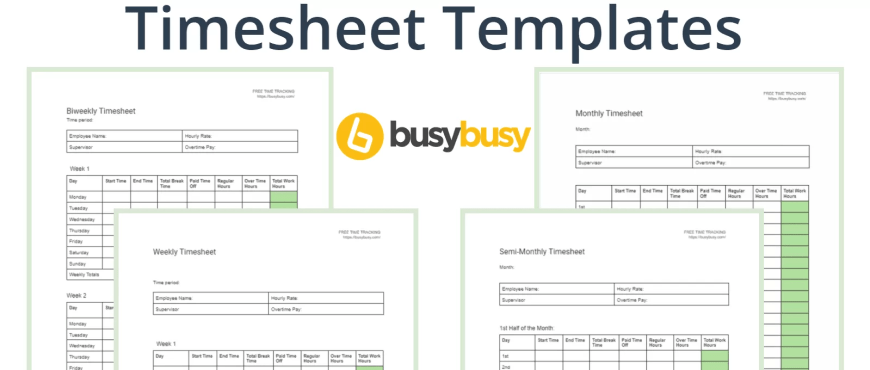
Seasonal depression is a form of depression that occurs during specific seasons, typically during the fall and winter months. It can have a profound impact on individuals, affecting their mood, energy levels, and overall well-being. For employers, it is crucial to understand the impact of seasonal depression on their workforce and take proactive steps to support employees dealing with this condition.
By addressing seasonal depression in the workplace and providing the necessary support, employers can foster a healthy and productive work environment, ultimately benefiting the employees and the organization. So, let’s dive into the strategies and best practices for managing seasonal depression in the workplace and ensure the well-being and success of everyone involved.
Understanding Seasonal Depression and Its Impact on Work Performance
Seasonal depression, or seasonal affective disorder (SAD), is a type of depression that follows a seasonal pattern. It typically occurs during the fall and winter months when the days are shorter and there is less natural sunlight. While it is less common, some individuals may also experience seasonal depression during the spring and summer months.
The exact cause of seasonal depression is not fully understood, but it is believed to be related to the changes in light exposure and the body’s internal clock. Reduced sunlight can disrupt the production of serotonin, a neurotransmitter that affects mood regulation. Additionally, it may disrupt the balance of melatonin, a hormone that regulates sleep patterns and mood.
The impact of seasonal depression on work performance can be significant. Employees may experience various symptoms that affect their ability to concentrate, make decisions, and perform tasks effectively. Some common effects of seasonal depression on work performance include:
Decreased productivity: Individuals with seasonal depression may struggle to maintain their usual level of productivity due to decreased energy levels, difficulty concentrating, and a lack of motivation.
Absenteeism: Seasonal depression can lead to increased absenteeism as individuals may find it challenging to get out of bed or face the day. They may also experience frequent illnesses or physical symptoms that further contribute to their absence.
Increased errors and mistakes: The cognitive symptoms of seasonal depression, such as difficulty concentrating and making decisions, can result in an increased likelihood of errors and mistakes in work tasks.
Reduced creativity and innovation: Seasonal depression can dampen an individual’s creativity and ability to think outside the box. This can impact problem-solving skills and limit the generation of innovative ideas.
Strained relationships and communication: Individuals with seasonal depression may withdraw socially, have difficulty communicating their needs, or experience mood swings that strain relationships with coworkers and supervisors.
Employers need to recognize the impact of seasonal depression on work performance and take steps to support their employees. By understanding the symptoms and challenges associated with seasonal depression, employers can implement strategies to mitigate its effects and create a supportive work environment for affected individuals. In the following sections, we will explore how to identify symptoms of seasonal depression in employees and provide the necessary support to help them manage this condition effectively.
Identifying Symptoms of Seasonal Depression in Employees
Identifying the symptoms of seasonal depression in employees is crucial for early intervention and providing appropriate support. While the severity and manifestation of symptoms can vary from person to person, being aware of common signs can help employers recognize when an employee may be struggling with seasonal depression. It is important to note that only a qualified healthcare professional can diagnose seasonal depression, but understanding these symptoms can aid in initiating conversations and offering support. Here are some key symptoms to look out for:
Physical Symptoms
Fatigue: Employees may complain of persistent feelings of tiredness and low energy levels, even after getting adequate rest.
Changes in appetite: Seasonal depression can lead to significant changes in appetite, such as increased cravings for carbohydrates and sugary foods, or a loss of appetite.
Weight changes: Some individuals may experience weight gain or weight loss as a result of changes in appetite and eating patterns.
Sleep disturbances: Employees may have difficulty falling asleep, experience restless or disturbed sleep, or have an increased need for sleep.
Decreased immune function: Seasonal depression can weaken the immune system, leading to increased susceptibility to illness and infections.
Emotional Symptoms
Persistent sadness: Employees may exhibit feelings of sadness, hopelessness, or emptiness that last for an extended period, often for more than two weeks.
Irritability: Seasonal depression can manifest as irritability or a short temper, making it challenging for individuals to regulate their emotions.
Anxiety: Some employees may experience heightened anxiety, restlessness, or feelings of unease.
Loss of interest or pleasure: Individuals may lose interest in activities they once enjoyed, including hobbies, socializing, or work-related tasks.
Emotional sensitivity: Employees may be more sensitive to criticism or rejection, with their emotions easily triggered by seemingly minor events.
Behavioral Changes
Social withdrawal: Employees may withdraw from social interactions, avoiding colleagues, group activities, or work-related events.
Decreased productivity: Seasonal depression can lead to a decline in work performance, with employees struggling to meet deadlines or complete tasks efficiently.
Increased absenteeism: Employees may take more sick days or time off due to physical or mental health-related issues.
Procrastination: Individuals with seasonal depression may have difficulty initiating or completing tasks, often delaying work until the last minute.
Substance abuse: Some employees may turn to alcohol or drugs as a coping mechanism, increasing the risk of developing substance abuse issues.
It is important for employers to approach these symptoms with empathy and understanding, encouraging open communication and providing resources for support. In the next section, we will discuss strategies to support employees dealing with seasonal depression in the workplace.
How to Support Employees Dealing with Seasonal Depression
Supporting employees dealing with seasonal depression is essential for their well-being and maintaining a positive work environment. Employers can play a significant role in providing the necessary support and accommodations to help employees manage their symptoms effectively. Here are some strategies to consider:
Promoting Work-Life Balance
Flexible work hours: Offer flexible scheduling options that allow employees to adapt their work hours to align with their natural energy levels. This can help them maximize productivity during their most productive times of the day.
Encourage breaks and time off: Encourage employees to take regular breaks throughout the day and utilize their vacation time to recharge and prioritize self-care.
Clear workload expectations: Set realistic expectations for workloads and deadlines, ensuring that employees do not feel overwhelmed and have a manageable workload.
Encourage self-care practices: Promote self-care activities such as exercise, mindfulness, and time for hobbies or activities employees enjoy outside of work.
Providing a Supportive Work Environment
Open communication: Foster a culture of open communication where employees feel comfortable sharing their challenges and seeking support. Encourage regular check-ins to discuss work-related concerns or any personal difficulties they may be experiencing.
Employee assistance programs: Offer employee assistance programs (EAPs) that provide confidential counseling services and resources for mental health support. Ensure employees are aware of these programs and how to access them.
Training for managers and supervisors: Provide training to managers and supervisors on recognizing the signs of seasonal depression, offering appropriate support, and creating an inclusive and supportive work environment.
Peer support networks: Facilitate peer support networks or employee resource groups where employees can connect with others who may be experiencing similar challenges. This can provide a sense of community and understanding.
Accommodations and Adjustments
Light therapy: Consider providing access to light therapy devices or adjusting workplace lighting to mimic natural sunlight, as light therapy has been shown to be effective in managing seasonal depression.
Ergonomic adjustments: Make ergonomic adjustments to workstations or provide ergonomic equipment to help employees feel more comfortable and reduce physical strain.
Temporary adjustments: Be open to temporary adjustments in job responsibilities or work arrangements to accommodate the needs of employees dealing with seasonal depression. This can help alleviate stress and enable individuals to manage their symptoms effectively.
Referral to mental health resources: Provide information and resources for mental health professionals or organizations specializing in seasonal depression. Encourage employees to seek professional help when needed.
By implementing these strategies, employers can create a supportive work environment that acknowledges and addresses the challenges employees may face due to seasonal depression. In the next section, we will explore the importance of workplace policies and programs for mental health and how they can contribute to supporting employees.
Workplace Policies and Programs for Mental Health
Implementing workplace policies and programs for mental health is crucial in creating a supportive environment that prioritizes employee well-being. These policies and programs play a significant role in promoting mental health awareness, providing resources for support, and reducing the stigma surrounding mental health issues. Here are some key considerations:
Implementing Mental Health Policies
Mental health inclusion policy: Develop a comprehensive policy that emphasizes the commitment to mental health inclusion. This policy should outline the organization’s stance on supporting employees with mental health conditions, including seasonal depression, and promoting a positive work environment.
Anti-stigma initiatives: Implement initiatives that aim to reduce the stigma associated with mental health conditions. This can include awareness campaigns, educational materials, and training sessions to educate employees about mental health and foster a more inclusive and understanding workplace culture.
Reasonable accommodations policy: Establish a policy that outlines the process for requesting and providing reasonable accommodations for employees with mental health conditions, including seasonal depression. This can help ensure that employees receive the necessary support and adjustments to perform their job effectively.
Offering Employee Assistance Programs
Employee assistance program (EAP): Implement an EAP that provides confidential counseling services, mental health resources, and referrals to employees seeking support. Make employees aware of the availability of the EAP and how to access its services.
Mental health benefits: Ensure that mental health benefits are included in employee health insurance plans. This can cover therapy sessions, psychiatric consultations, and other mental health services that employees may require.
Training for EAP utilization: Educate employees on the benefits and utilization of the EAP through workshops or informational sessions. Encourage employees to take advantage of these resources and reduce any hesitations they may have about seeking support.
Promoting Mental Health Awareness
Training and education programs: Provide training sessions or workshops to raise awareness about mental health, including seasonal depression, among employees and managers. This can help foster a more empathetic and supportive work environment.
Communication campaigns: Launch communication campaigns that promote mental health awareness and well-being. This can include sharing resources, success stories, and tips for managing seasonal depression in the workplace through newsletters, intranet platforms, or dedicated mental health awareness events.
Mental health champions: Appoint or train mental health champions within the organization who can serve as advocates for mental health and provide support to employees. These champions can offer guidance, resources, and a listening ear to colleagues experiencing seasonal depression or any other mental health concerns.
By implementing workplace policies and programs for mental health, employers can create a culture that prioritizes employee well-being and supports those dealing with seasonal depression. In the next section, we will delve into legal obligations and considerations that employers should be aware of when managing seasonal depression in the workplace.
Legal Obligations and Considerations for Employers
Employers have legal obligations and considerations when it comes to managing seasonal depression in the workplace. It is important to understand and comply with relevant laws and regulations to ensure a fair and inclusive work environment for employees dealing with seasonal depression. Here are some key areas to consider:
Understanding Disability Laws and Regulations
Americans with Disabilities Act (ADA): The ADA protects individuals with disabilities, which can include mental health conditions like seasonal depression. Employers must comply with ADA requirements, including providing reasonable accommodations and not discriminating against employees based on their disability.
Family and Medical Leave Act (FMLA): The FMLA allows eligible employees to take unpaid leave for medical reasons, including mental health conditions. Employers must understand and adhere to FMLA provisions when employees need time off for seasonal depression treatment or recovery.
State and local laws: Familiarize yourself with state and local laws regarding disability accommodations and employee rights. These laws may vary, so it is important to be aware of any specific requirements that may apply in your jurisdiction.
Accommodating Employees with Seasonal Depression
Interactive process: Engage in an interactive process with employees who request accommodations for seasonal depression. This involves discussing their needs, identifying possible accommodations, and determining the most appropriate solutions on a case-by-case basis.
Reasonable accommodations: Provide reasonable accommodations that allow employees to perform their essential job functions effectively. This can include flexible work hours, modified work schedules, adjustments to workload or deadlines, or providing additional support or resources.
Documentation and verification: Request documentation from healthcare professionals to verify the need for accommodations. However, be mindful of maintaining confidentiality and privacy in handling medical information.
Handling Confidentiality and Privacy Issues
Privacy protection: Safeguard the privacy and confidentiality of employees’ medical information related to seasonal depression. Limit access to such information to those who have a legitimate need to know, and ensure compliance with applicable privacy laws, such as the Health Insurance Portability and Accountability Act (HIPAA).
Non-discrimination and confidentiality policies: Establish clear non-discrimination and confidentiality policies that protect employees’ rights and privacy. Communicate these policies to all employees and enforce them consistently.
Training and awareness: Provide training to managers and supervisors on the importance of maintaining confidentiality and handling sensitive information related to seasonal depression. Foster a culture of trust and respect where employees feel comfortable seeking support without fear of judgment or repercussions.
By understanding and fulfilling legal obligations, employers can create a workplace that promotes inclusivity, supports employees with seasonal depression, and complies with relevant laws and regulations. This comprehensive approach ensures a fair and equitable work environment for all employees.














